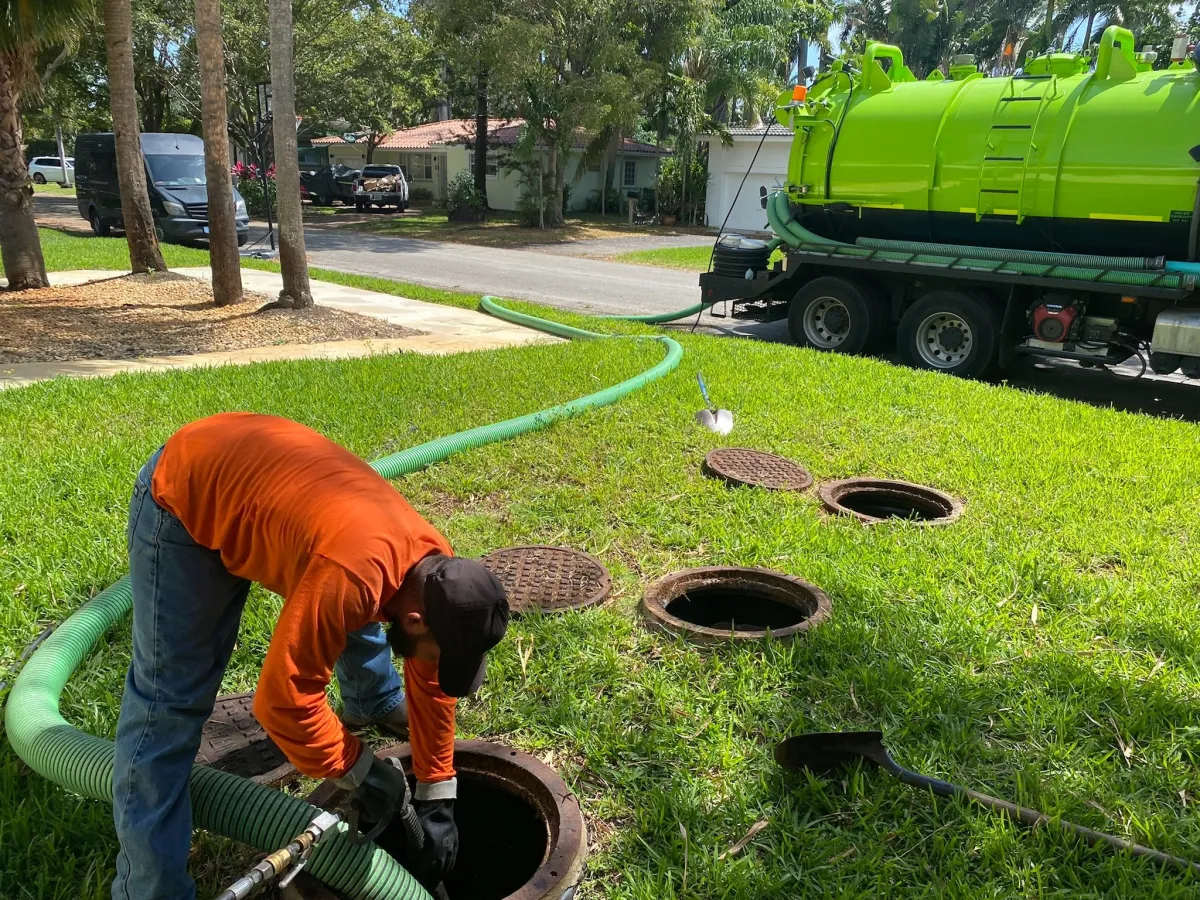Can You Clean Out a Septic Drain Field? Your Complete Guide

Have you ever flushed your toilet only to hear gurgling sounds or noticed wet, smelly spots in your yard? These might be signs of a struggling septic drain field. Many homeowners wonder, can you clean out a septic drain field when problems arise?
We understand how stressful septic system issues can be. You're worried about expensive replacements and the mess that might come with them. The good news is that in many cases, you CAN clean and restore your drain field with the right approach!
In this guide, we'll walk you through everything you need to know about drain field maintenance and cleaning. Let's help you save your septic system and avoid costly replacements!
Understanding Your Septic Drain Field
Before jumping into cleaning methods, let's understand what we're working with:
What Is a Septic Drain Field?
A drain field (also called a leach field) is the final stage of your septic system. According to the EPA, it consists of:
Underground perforated pipes that release wastewater into soil
Gravel or aggregate surrounding these pipes
Soil that filters the wastewater naturally
Common Drain Field Problems
Your septic drain field might need cleaning if you notice:
Standing water or soggy areas above the drain field
Slow-draining fixtures throughout your home
Sewage odors in your yard
Unusually lush, green grass over the drain field area
Can You Clean Out a Septic Drain Field?
The short answer is yes, but with important caveats. According to NESC at West Virginia University, there are several effective ways to clean and restore drain fields, but the right method depends on what's causing the problem.
How to Clean Septic Drain Field: Professional Methods
For serious problems, these professional methods are most effective:
1. Jetting
Hydro-jetting uses high-pressure water to clear clogs:
A professional inserts a specialized hose into your drain field pipes
Pressurized water blasts away biomat (slimy bacterial buildup) and other blockages
The debris gets flushed back into the septic tank for later pumping
National Environmental Services Center notes that jetters operate at 1000-4000 PSI and should only be used by trained professionals.
2. Aeration Treatment
This method adds oxygen to help healthy bacteria thrive:
A pro installs an aerator in your septic tank
The aerator pumps oxygen into the system
Aerobic (oxygen-loving) bacteria multiply
These bacteria break down waste more efficiently
A study by Purdue University found that aeration can extend drain field life by up to 10 years!
3. Chemical Treatments
Special bacterial and enzyme treatments can help:
A technician adds biological additives to your septic system
These compounds break down the biomat clogging your drain field
Treatment continues over several weeks or months
The National Onsite Wastewater Recycling Association recommends using only products specifically formulated for septic systems.
DIY Methods: How to Clean Septic Drain Field Yourself
For less severe problems, these DIY methods might help:
1. Reduce Water Usage
Give your drain field time to dry out:
Fix all leaky faucets and toilets immediately
Install water-saving fixtures throughout your home
Spread out laundry loads over several days
Take shorter showers
Water.org reports that reducing household water use by 30% can significantly improve septic function.
2. Biological Additives
Some over-the-counter products can help:
Purchase a septic-specific enzyme or bacterial treatment
Follow package directions exactly
Flush the treatment down your toilet
Repeat as directed on the package
The National Environmental Health Association cautions to only use products labeled specifically for septic systems.
3. Drain Field Rest and Rotation
If your system has multiple drain fields:
Locate the diverter valve (usually near the septic tank)
Switch to the alternate drain field
Allow the problematic field to rest for 6-12 months
The natural soil bacteria will break down the biomat during this time
What NOT to Do to Your Drain Field
Avoid these common mistakes:
Never drive or park vehicles on your drain field
Don't plant trees or shrubs near the drain field area
Avoid using a rototiller on the drain field
Never direct rainwater drainage toward your drain field
Don't use harsh chemicals like bleach or antibacterial soaps excessively
According to Cornell University, physical damage to drain field soil structure is often irreversible!
When to Call a Professional
Some situations require expert help:
Standing sewage on your lawn
Multiple backed-up plumbing fixtures
System hasn't been inspected in over 3 years
Home was recently purchased with unknown septic history
The National Onsite Wastewater Recycling Association maintains a directory of certified septic professionals.
Preventative Maintenance Tips
Keep your drain field healthy with these practices:
Have your septic tank pumped every 3-5 years
Install an effluent filter on your septic tank
Use septic-safe toilet paper
Avoid flushing anything besides human waste and toilet paper
Get professional inspections every 1-3 years
Conclusion
So, can you clean out a septic drain field? Yes, through professional methods like jetting and aeration, or DIY approaches like reducing water usage and using biological additives. The key is addressing problems early before they become severe.
Remember that prevention is always easier than repair. With proper maintenance and care, your septic drain field can function properly for decades. We hope this guide helps you maintain a healthy septic system and avoid the stress of major repairs!
Have you had experience with septic drain field cleaning? We'd love to hear your story in the comments below!

© 2025 | All Rights Reserved | Privacy Policy
